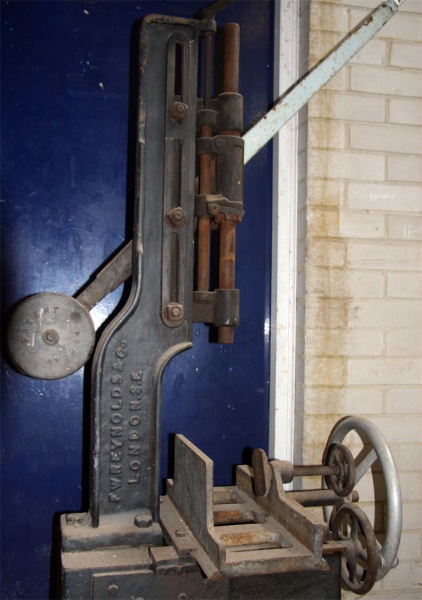condeesteso
Established Member
The question is to restore or not, or partially. Technically it is very good and had been in regular use until recently. It came from the Chevening Estate nearby and was apparently used for barn repairs and fencing. And it really does work.


The main shaft runs in bronze bearings with no apparent play and rotates 180 degrees to turn the chisel



The chisel is traditional mortice form and is angled slightly into the cut, then it deflects slightly as it enters (and I haven't worked out how yet as the shaft does not flex at all and the bit seems to have a Morse-type taper on it.

I have found someone with about 8 more chisels, and it needs a clean at least. I don't fancy making it shiny, and I'm too busy anyway. Thoughts on sympathetic 'restoration' welcome. Apparently there is one more known survivor in a museum near here. May need to go and see that, but I like this faded paint etc.
and many thanks to AndyT for the tip off, as it was only 3 miles from me - a find indeed!


The main shaft runs in bronze bearings with no apparent play and rotates 180 degrees to turn the chisel



The chisel is traditional mortice form and is angled slightly into the cut, then it deflects slightly as it enters (and I haven't worked out how yet as the shaft does not flex at all and the bit seems to have a Morse-type taper on it.

I have found someone with about 8 more chisels, and it needs a clean at least. I don't fancy making it shiny, and I'm too busy anyway. Thoughts on sympathetic 'restoration' welcome. Apparently there is one more known survivor in a museum near here. May need to go and see that, but I like this faded paint etc.
and many thanks to AndyT for the tip off, as it was only 3 miles from me - a find indeed!









































